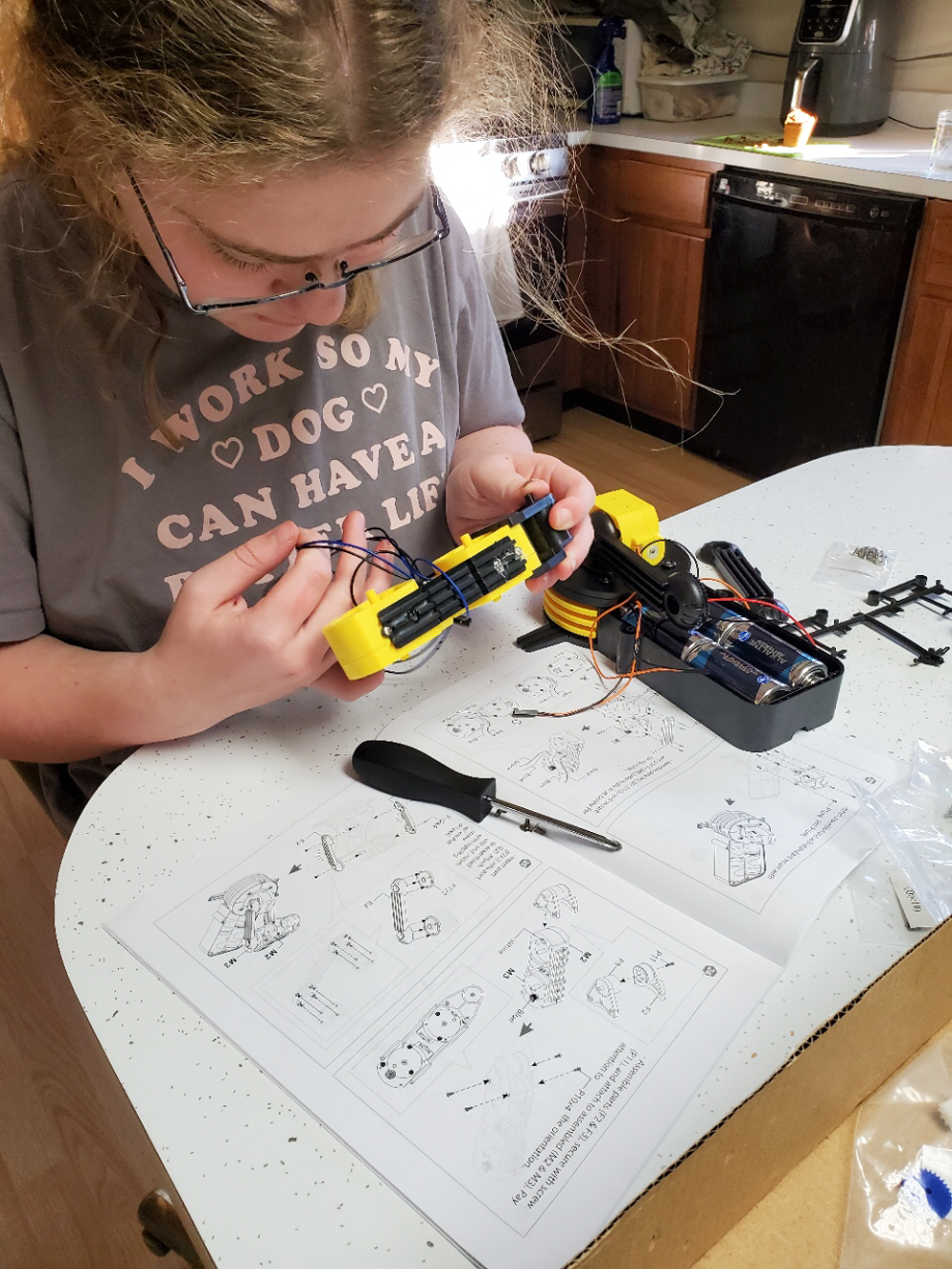This tutorial was originally published on Crafting a Green World.
This upcycled cardboard building set is a terrific open-ended toy that won’t cost you a cent!
If you’ve ever seen a kid with a handful of LEGOs, you know how wonderful open-ended building toys are. They let kids exercise their creativity, build their problem-solving skills, strengthen math and physics concepts–and keep themselves entertained for ages, too! Open-ended toys have a lot more extended play-value than toys that have a single purpose (and a lot LOT more play-value than noisy, light-up toys!).
This particular upcycled cardboard building set is as open-ended as they come. You can create the pieces in any shape you can imagine, connect them in a myriad of ways, and even paint or decorate them however you’d like. And the best part is that as long as you have a piece of corrugated cardboard in your recycling bin, you can expand on your building set forever.! Tbh, creating the set is as fun as building with it!
Here’s how to make the quickest, easiest, and SUPER fun upcycled cardboard building set:
To make this building set: you will need:
- corrugated cardboard. Thin cardboard won’t work for this project, but pretty much any corrugated cardboard will. If you’re short on corrugated cardboard, check your local recycling center or ask around your friend group for shipping boxes.
- scissors. Cutting corrugated cardboard does take hand muscles, but larger scissors make it easier. If you’re making this project with younger kids, let them draw the pieces they want onto the cardboard, and then you can do the tough job of cutting them out. If kids are a little older, though, give them a go at cutting the cardboard themselves–it’s tough, sure, but it builds the hand muscles they need for writing by hand and other fine motor activities.
- tools for embellishment (optional). I really like the look of these plain, but with paint, markers, or stickers, you can add variety and creative inspiration. Googly eyes are always fun, as are pieces painted in a rainbow of colors. Use your imagination to make the cardboard building set of your dreams!
Step 1: Draw templates (optional), and cut the cardboard into shapes.
I’m a little obsessed with geometric shapes, but you can cut your corrugated cardboard pieces however you like. If you’re making a basic set for a kid, a variety of geometric shapes, along with some free-formed, more abstract pieces, will give them a good starting place.
If you’re making a set WITH a kid, however, my favorite technique is to encourage the kid to draw or cut any fun shape their heart desires, modeling a few ideas for them, perhaps, to give them the idea. While they’re being creative, I’ll cut out those same boring geometric shapes (I’m obsessed!) so that they’ve got some basic pieces to work with, as well.
Step 2: Cut notches in the cardboard pieces.
Cut a thin notches in the cardboard pieces wherever you’d like them to connect. Longer notches will hold the connections more firmly, but you don’t need the notches to go more than 1/4 or 1/3 of the way through the piece.
Cutting notches is a little easier than cutting out the pieces, so if you’ve got a kid who’s on the cusp of being able to cut the corrugated cardboard, this is a doable activity to help build their hand strength.
This is also a great place to add to the interest of the set. Finding unusual places to cut notches encourages kids to make more creative connections.
To play with this toy, simply connect the notches and start building!
I think kids have the best time when they can follow their own interests and imaginations, but you can sneak in some STEM problem-solving by offering up challenges. What is the tallest tower you can build? What is the longest bridge you can build between two chair backs? Can you build a square shape using only circle pieces? Try building a cat!
Cheap, accessible toys like these are especially important to have out in the world, because they build equity. The local underfunded childcare center probably doesn’t have fancy Magna-Tiles, and heck, even Duplos are ridiculously expensive these days, but anyone can make and donate a huge set of the most beautiful cardboard building toys with some time and patience.
And homemade toys like that are important for every kid to have, even if their parents can afford the bougie stuff. Maybe it’s the pre-Christmas anti-consumerist crankiness starting in me already, but I think it’s crucial for every kid to learn that some of the best toys are both handmade and free. I mean, I love all those fancy, expensive natural wood toys as much as the next crunchy mom (ask me about my Waldorf toy obsession anytime!), but you know what’s nearly as natural, and even more free, than that?
CARDBOARD, that’s what!
.jpg)
.jpg)
.jpg)
.jpg)
.jpg)
.jpg)
















.jpg)
.jpg)
.jpg)
.jpg)
.jpg)
.jpg)
.jpg)
.jpg)
.jpg)
.jpg)
.jpg)
.jpg)
.jpg)
.jpg)
.jpg)























